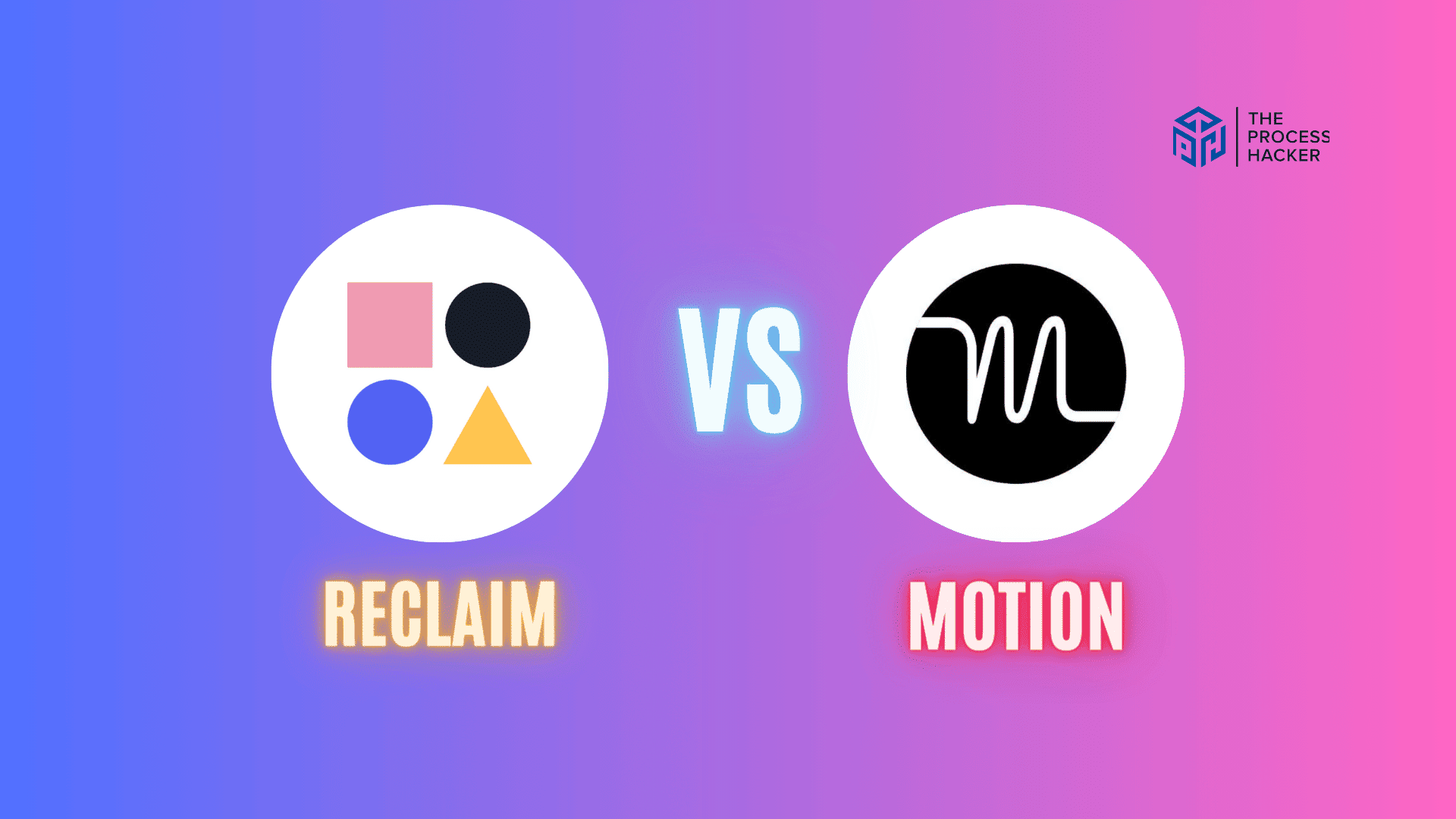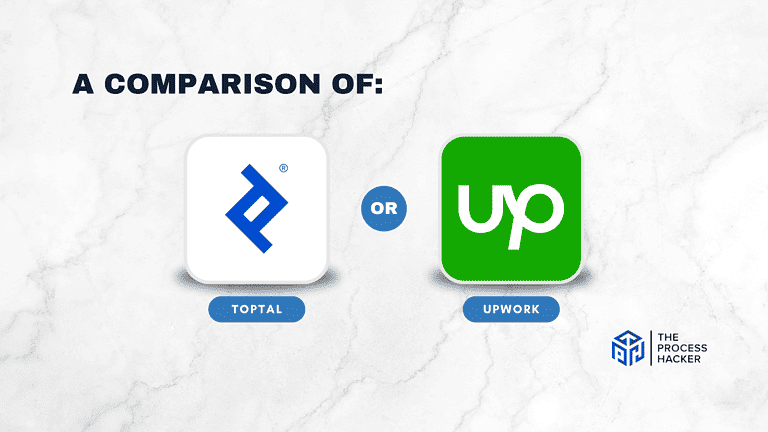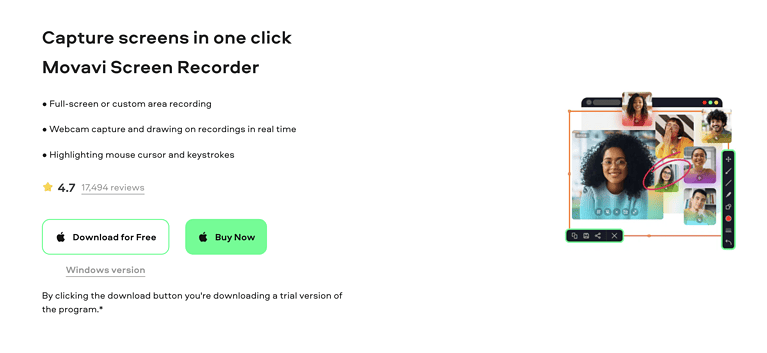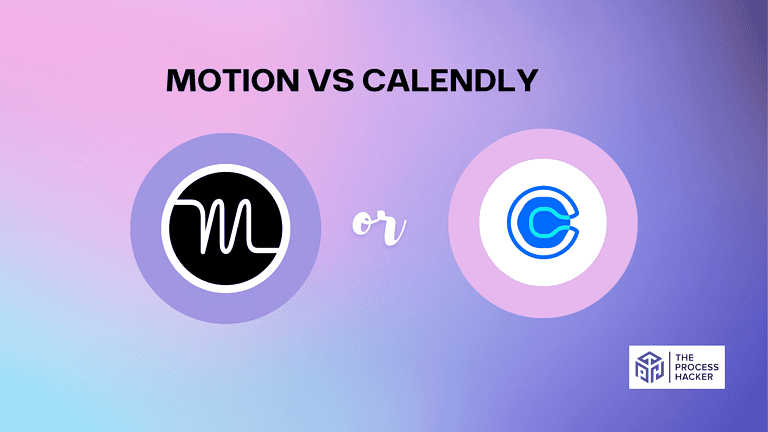Reclaim vs Motion: Which Smart Calendar App is Better?
Hey there! So, you’re stuck between the productivity and smart calendar tools of Reclaim and Motion…
Well, you’ve come to the right place, and I’m here to help you make the right decision, saving time so you can get more done!
If you purchase through our partner links, we get paid for the referral at no additional cost to you! For more information, visit my disclosure page.
My hands-on experience with these AI tools, coupled with my expertise in project management, makes me well-positioned to show you the differences between Reclaim and Motion.
I’ve spent many hours trying out both Motion and Reclaim AI to understand their strengths and weaknesses. By the time this comparison is over, you’ll know exactly what each app has to offer, how they compare, and which can give you the most value.
So, let’s get to the bottom of what Reclaim and Motion are all about so you can pick the right productivity tool for you!
Brief Overview: Motion vs Reclaim AI
First, I’ll give you a quick overview of Reclaim and Motion as smart calendars:
Reclaim
Reclaim is a smart calendar assistant designed to help busy professionals manage their work-life balance effectively. It integrates seamlessly with your existing calendar, ensuring you have time for your tasks and personal life.
Key Selling Points:
- Intelligent scheduling that adapts to your changing needs
- Offers add-on tools like Google Calendar
- Sync calendars to the app and act as a meeting scheduler
- Prioritizing tasks according to importance and deadlines
- Automatic blocking of time for personal events
- Hassle-free rescheduling of functions in case of conflicts
- Priority habits feature and scheduling links
Motion
Motion is a productivity-enhancing calendar app that combines the management of tasks and scheduling into one platform. It provides a consolidated view of your to-do list and calendar, enabling efficient time management and a timeboxing experience.
Key Selling Points:
- Unified view of tasks, calendar events, meeting scheduler
- Integration with popular tools like Slack
- Seamless integration with multiple calendars like Outlook and Google Calendar
- Sync calendars to the app and offer recurring tasks feature
- Smart task scheduling based on your availability
- Time tracking to monitor productivity
- Focus mode to minimize distractions and boost productivity
Quick Verdict: Motion vs Reclaim AI
Reclaim AI delves deep into your multiple calendars, ensuring you never overbook yourself. It prioritizes your tasks based on urgency and intelligently spaces them out, making sure one’s day isn’t just packed but also productive.
Whether it’s a board meeting, a dentist appointment, or your child’s recital, Reclaim ensures you don’t miss out. The real-time calendar syncing across multiple platforms helps you maintain a work-life balance.
Motion goes beyond just scheduling, transforming your calendar into a dynamic task management tool.
What sets Motion apart is its focus on actionable scheduling. It’s not just about finding free slots in your day but also prioritizing and organizing tasks that need to be done.
Motion also changes how you manage your time by using time blocking to combine events and tasks. You can see all your commitments and projects in one place instead of switching between apps or lists. Its easy-to-use layout encourages proactive planning, which helps you balance the unexpected amongst your important priorities.
Integrating with various productivity tools or with the ability to sync calendars, Motion provides context to your meetings and due dates and creates tasks, so you’re not just reminded of an appointment, but you’re also prepared for it. This makes every day organized and purpose-driven, ensuring you’re always a step ahead.
Product Overview: Motion vs Reclaim AI
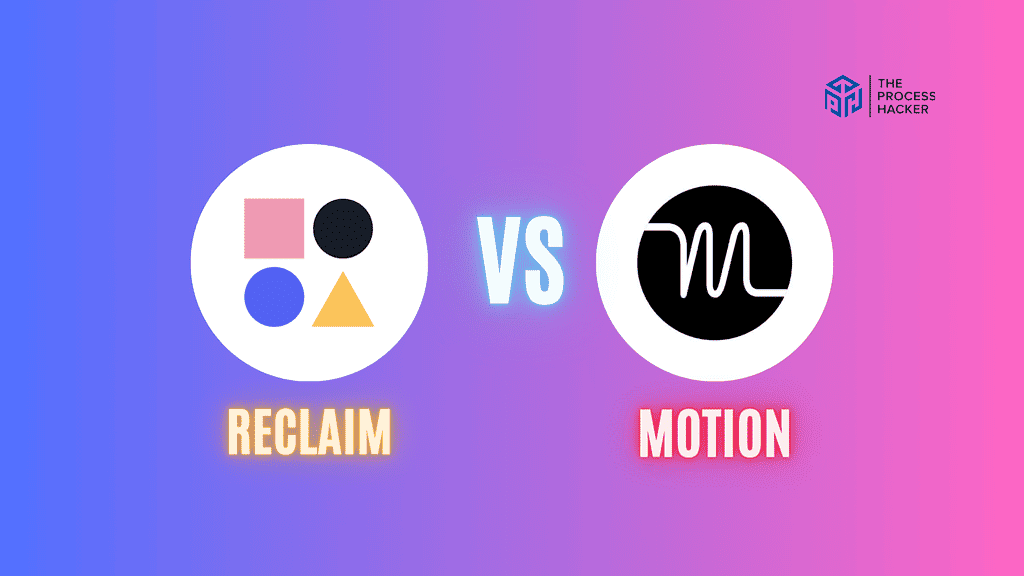
What is it?
Reclaim is an AI calendar app designed to prioritize and integrate personal and professional events, ensuring nothing overlaps and everything gets the time it deserves.
Motion is a similar AI calendar tool that schedules events and integrates task management, giving you a holistic view of your day.
Who is it for?
Reclaim is ideal for professionals who juggle multiple roles in their lives and wish to ensure that neither their professional nor personal commitments are compromised.
Motion is for higher performers and entrepreneurs who are deeply integrated with productivity tools and looking for a calendar that does more than just schedule – one that organizes and prioritizes. It is also dubbed as one of the best AI tools for college students.
What makes it unique?
Reclaim stands out for its ability to harmoniously blend work and personal events, ensuring users always have a work-life balance.
Motion distinguishes itself with its task-driven approach, transforming mere event reminders into actionable items and elevating everyday scheduling into purpose-driven automated planning.
What does it do?
Reclaim uses intelligent algorithms to block time for personal tasks, adapts to your preferences over time, and ensures that your work and personal calendars coexist without clashing.
Motion goes beyond scheduling, integrating with various productivity tools, and providing context to tasks and meeting management. Its AI organizes your day with prioritization in mind, ensuring you’re prepared and informed ahead of every engagement.
Quick Comparison: Motion vs Reclaim AI
| Key Features | Reclaim | Motion |
|---|---|---|
| #1) Pricing | Winner | |
| #2) Free Plan | Winner | |
| #3) Ease of Use | Winner | |
| #4) Design & Functionality | Winner | |
| #5) Customization | Winner | |
| #6) Collaboration | Tie | Tie |
| #7) Integrations | Winner | |
| #8) Mobile App | Winner | |
| #9) Security | Tie | Tie |
| #10) Artificial Intelligence (AI) | Winner | |
| #11) Project Management | Winner | |
| #12) Calendar Sync | Tie | Tie |
| #13) Automatic Scheduling | Tie | Tie |
| Overall | Winner |
Feature Comparison: Motion vs Reclaim AI
Let’s compare the Reclaim and Motion’s advanced features so you can make the right decision for you and your business.
#1) Pricing
Reclaim AI’s paid plan starts at $10 per user per month, and they have various packages, including Business and Enterprise Plans. Reclaim AI also offers discounts for those in education, nonprofit organizations, startups, and even those considering switching providers.
Motion has a straightforward pricing model starting at $34 monthly for individual users. This plan provides access to the platform and integrates AI’s power for automated scheduling and planning. The team plan is cheaper per person but requires multiple users.
Reclaim AI has the edge when considering the starting price, additional offers, and discounts available. Reclaim AI is cheaper, especially for businesses and organizations that fall under their discount categories.
Verdict: For pricing, Reclaim AI is the more favorable choice.
#2) Free Plan
Reclaim AI’s free plan is designed with the individual user in mind, offering a “free forever” structure. This plan caters to a single user and helps schedule smart time blocks in advance. When planning a meeting, you can also send scheduling links to ensure both of you can find a time that works best.
Motion provides a 7-day free trial to give you a taste of its features. While this limited period allows for exploring the platform’s robust features, it requires users to enter card details. That said, Motion does ensure user flexibility with its “cancel anytime” provision, which provides a safety net if you are not yet ready to commit.
Although Motion offers a time-restricted trial, Reclaim AI is the only app of the two that has a free version.
Verdict: Unlike Motion, Reclaim AI stands as it has a free plan.
#2) Ease of Use
Motion has a streamlined, user-friendly interface designed for management and organization. Its intuitive dashboard and clear icons make it easy for new users to navigate, create a new task, and get things done without a steep learning curve.
Reclaim AI focuses on integrating with your existing calendar and tasks. Its user interface is built to minimize disruptions, allowing you to manage your time efficiently. Though its features are comprehensive, you have a slight learning curve when leveraging the more advanced scheduling features.
While platforms prioritize user experience, Reclaim AI requires more time to fully grasp. However, if we’re talking about immediate ease of use for a new user, Motion’s simple dashboard is more accessible for someone just starting.
Verdict: For ease of use, Motion takes the lead.
#4) Design & Functionality
Reclaim AI offers a clean, intuitive interface that emphasizes clarity and user-friendliness. Its dashboard is designed with vibrant colors, clear icons, and straightforward navigation, making it easy for you to manage your schedules without getting overwhelmed. Moreover, it integrates seamlessly with various calendar tools, enhancing its functionality.
Motion presents a minimalist design that focuses on sleekness and efficiency. The layout is streamlined, with every element carefully placed to reduce distractions and promote productivity. Its smart integrations and quick actions cater to busy professional who values simplicity and speed.
While both platforms are designed thoughtfully, Motion’s minimalist approach and emphasis on efficiency give it a slight edge, especially for if you appreciate a clutter-free and direct interface.
Verdict: For Design and Functionality, Motion is the preferred choice.
#5) Customization
Motion shines when it comes to personalizing your experience. With a series of user-friendly predefined templates and workflows, it ensures an easy start for newcomers. What truly sets it apart, though, is the adaptability it offers. You can effortlessly modify the given templates or even craft your unique setups, giving you unparalleled control over your tasks and work calendars.
Reclaim AI provides you with customization options, particularly around scheduling and basic management of a new task. It allows for some calendar tailoring and has more advanced features for setting automation rules. However, these may be slightly complex for users looking for simple customization options.
While Reclaim AI offers a broad range of customization options, Motion’s user-centric approach to personalization stands out. Its straightforward adaptability combined with a clean and intuitive interface makes it an excellent choice for those who want a tool they can truly make their own.
Verdict: For customization, Motion stands out as the clear winner.
#6) Collaboration
Collaboration in Reclaim AI is designed with team dynamics in mind. The tool allows for easy sharing of schedules, optimal time blocking for group tasks, and integration with significant team communication platforms. Its basic features ensure every member stays in the loop and operates efficiently without time clashes.
Offering something new, Motion now emphasizes team synchronicity in its collaboration features. By pooling important tasks from various team tools, Motion provides an overview of team commitments, helping to align individual schedules for collective productivity. Its integrations with leading team communication apps ensure that teams remain interconnected and updated.
Both Reclaim AI and Motion strongly emphasize team collaboration, each with its distinct flair. Reclaim AI focuses on individual-to-team schedule alignment, while Motion prioritizes collective team task management features. Given their strengths in promoting team harmony, picking one over the other is hard.
Verdict: For collaboration, it’s a tie between the two tools of Reclaim AI and Motion.
#7) Integrations
Reclaim AI’s strength in integrations lies in its compatibility with communication and project management apps. However, with software like Google Calendar and Outlook, they only offer them as “add-ons.”
Motion takes pride in its extensive integrations with a range of popular apps. You can effortlessly connect Motion with apps such as Outlook and Google Calendar, Slack for communication, Trello and Google Tasks, Google Drive for cloud storage, and Zoom and Google Meet to schedule meetings virtually.
Given Motion’s diverse set of integrations that align with a broader array of daily planner tools, it becomes a top pick for users who utilize a mixture of productivity, communication, and storage platforms. Further, Motion’s API expands the capability beyond integrations.
Verdict: For integrations, Motion is the standout performer.
#9) Mobile Apps
Currently, Reclaim AI does not offer a native mobile app. You have to rely on a web-based interface or integration with other calendar platforms to access your schedules and tasks while on the go.
On the other hand, Motion understands the necessity of on-the-move scheduling in today’s fast-paced world. They offer a desktop app and a dedicated app available on both iOS and Google Play. This ensures that you can manage your tasks, check schedules, and collaborate efficiently, all from the convenience of your mobile device.
While Reclaim AI brings a lot to the table in terms of features, the absence of a native mobile app can be a deal-breaker for many. With its availability on major mobile platforms, Motion clearly has the upper hand in this category.
Verdict: For mobile apps, Motion is the clear winner.
#10) Security
Reclaim AI doesn’t compromise on user security either. With multi-factor authentication, stringent data access controls, and regular penetration testing, they ensure a fortified defense against potential threats. Its commitment to GDPR compliance and user privacy further underscores its dedication to safeguarding your data.
Security is paramount to Motion. The platform employs advanced encryption protocols in transit and at rest, ensuring that your data is always protected. They also undergo regular third-party security audits and have a transparent incident response policy, reassuring you that your data is safe.
Both platforms firmly commit to security, implementing industry-leading measures to protect user data. Given the high-security stakes in today’s digital landscape, both need help selecting a clear winner. Both provide peace of mind when it comes to data protection.
Verdict: It’s a tie between Motion and Reclaim AI for security.
#11) Artificial Intelligence (AI)
True to its name, Reclaim AI leverages sophisticated artificial intelligence algorithms to assist you in reclaiming your time. The platform’s AI assesses your calendars, especially the ones with pre-existing Outlook, Google Calendar, other apps, task lists, and preferences.
Then, it dynamically suggests optimal scheduling with a booking link, which avoids conflicts by looking for mutual free time and ensuring efficient time management. Additionally, its predictive analytics can forecast busy periods and suggest pre-emptive strategies.
Motion integrates AI to enhance your productivity and streamline the management of tasks. Its AI capabilities focus on analyzing your behavior over time to suggest optimal times for breaks, task prioritization, and even the best hours for deep work. This adaptive learning ensures that the platform evolves with the user, continually offering more tailored suggestions.
While both tools harness the power of AI to elevate your experience, Reclaim AI’s approach is a bit more comprehensive, utilizing AI not just for managing all the tasks but for intelligent and proactive scheduling.
Verdict: For AI, Reclaim AI takes the crown.
#12) Project Management
Reclaim AI primarily focuses on time management and smart scheduling. While it can certainly handle task allocation within time blocks and help coordinate team availability for projects, it doesn’t offer the same depth of AI project management features as Motion tasks.
Motion is one of the best task management apps out there, as it helps you create tasks and manage them. You can pull from an external tool like Google Tasks or create tasks manually. Then, you can organize tasks into projects, set milestones, and track progress with built-in analytics. The collaborative features help busy teams manage tasks with a unified view of their projects.
When considering project management, Motion’s dedicated features for organizing tasks into projects, tracking milestones, and collaborative boards make it more suited for teams looking for project oversight and execution.
Verdict: For Project Management, Motion is the preferred choice.
#12) Calendar Sync
Reclaim AI’s calendar sync feature allows you to seamlessly integrate your personal time and work calendar, ensuring no overlap in commitments. It also automatically adjusts and reallocates time-based tasks on priorities, keeping you focused and efficient.
Motion’s calendar sync feature is designed for simplicity and effectiveness. It allows you to sync multiple calendars from different platforms like Outlook and Google Calendar in one unified calendar view. Additionally, Motion provides smart scheduling suggestions to maximize productivity throughout the day.
Both Reclaim AI and Motion offer robust calendar synchronization capabilities. While Reclaim AI focuses on blending personal and work commitments and dynamic rescheduling, Motion emphasizes unified views from multiple platforms and intelligent scheduling. Depending on user preference for dynamic adjustments or consolidated viewing, it can be seen as a tie.
Verdict: For Calendar Synchronization, it’s a tie between Reclaim AI and Motion.
#13) Automatic Scheduling
Reclaim offers an automatic scheduling feature that seamlessly integrates professional commitments with team collaborations. This tool is designed to automatically schedule and optimally block time for business tasks, meeting hours, and group projects. Doing so ensures that everyone’s availability is considered, striking a balance that promotes team efficiency without overwhelming individual calendars.
Motion has crafted its automatic scheduling, focusing on the modern business professional. It doesn’t just automatically schedule tasks based on individual productivity but places a significant emphasis on ensuring team synchronicity. By integrating with numerous team tools and platforms, Motion’s feature can automatically schedule and align collective tasks, ensuring overlapping commitments and meetings are efficiently managed.
It’s evident that Reclaim AI and Motion both excel in automatic scheduling for businesses. Reclaim AI shines in balancing individual tasks with team requirements, while Motion’s strength is significantly promoting collective productivity when tasks overlap. Given the strengths of each tool and how they automatically schedule tasks, the best choice truly depends on your needs.
Verdict: For Automatic Scheduling of business, it’s a tie between Reclaim AI and Motion.
Final Thoughts on Motion vs Reclaim AI
As a busy entrepreneur, I’ve worked with many different scheduling tools and smart calendars.
And I can say that Motion and Reclaim AI are two of the best tools in the game! Both Motion and Reclaim AI have features that make them useful for different types of users.
With its colorful design, Reclaim AI focuses on balancing work hours and personal plans. This makes it an excellent tool for people with many responsibilities and wants to ensure a good work-life balance.
Motion stands out for entrepreneurs and high performers who want a clean, simple design focusing on automation and efficiency. Its sleek design and ability to work with other tools make it the best choice for people who work in the fast-paced business world.
Thus, I believe that Motion is the best smart calendar app in the business. Its design sensibilities and focus on productivity make it a great choice for professionals and entrepreneurs.
If you’re a business person who wants to be as efficient as possible, choose Motion to optimize your schedule and supercharge your productivity.

